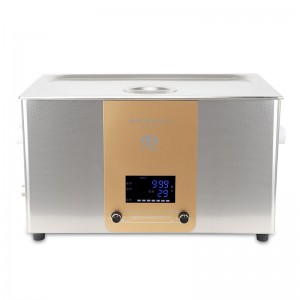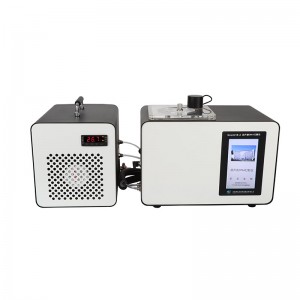Product
MPB4-1000 Parallel Bioreactor
Product manual
Parallel bioreactors can help experimenters efficiently evaluate the influence of different culture strains and process parameters, quickly determine the optimal process parameters, and guide the subsequent industrial scale-up process. It can be applied to fermentation process optimization, high-throughput strain screening, medium screening and evaluation etc.
The original AFDP chip module of the product can realize the high-speed parallel transmission and control of data, and ensure the high consistency of the internal parameters of each reactor. At the same time, the system is scalable and can be expanded from a single bioreactor system to multiple bioreactor systems. The system also includes a series of well-designed benchtop modules and intuitive software control modules for ultimate convenience.
Performance characteristics
The whole machine is small and compact, with an integrated design, which saves laboratory space; it is consistent with the production tank in terms of structure, flow field characteristics and control methods, which is convenient for later enlargement.
Integrated design, plug and play; easy to learn, easy to use, easy to operate, clear logo, fool-proof design.
Independent control, 41 hardware measurement and control parameters and 192 software parameters for each tank. The structure is consistent with the production tank, and it is easy to enlarge.
Arbitrary expansion of multiple devices to form a high-throughput fermentation platform; cross-device fermentation tank grouping; cross-device parallelism.
pH, DO, temperature, feed pump flow rate can be quickly calibrated with one key, and the data is displayed intuitively.
Programs can be preset to automatically adjust parameters at regular intervals.
The hardware guarantees the synchronization of signal collection and instruction sending, the size is reduced by more than 50 times, plug and play, and the expansion of third-party equipment is convenient.
It can realize convenient control among multiple parallel bioreactors, select the tank number with one key, and set the parameters with one key.
pH and DO have automatic compensation adjustment.
The acid and alkali pumps can be used as feeding pumps. The pH not only has two-way automatic control mode, but also one-way alkali and one-way acid addition modes.
Instrument parameters
1. Model: MPB4-1000
2. Dimensions: 800*730*780mm
3. Net weight: 60kg
4. Number of fermenters: 4 units
5. Tank size: Total volume 500ml/1000mL, specifications: Φ85*133mm/Φ100*157mm, working volume 70%
6. Can lid interface: With pH, DO, temperature, stirring, ventilation, sampling, exhaust gas cooling device, defoaming, four-channel feeding port, puncture and Luer inoculation ports, etc.; the tank is made of high borosilicate glass
7. Stirring control: High-precision DC motor, 100-1200 rpm, accuracy: ±1rpm
8. Stirring paddle structure: 2 layers of 6 blades with straight blades, adjustable in position
9. Shaft seal: Shaft seal seal, tank pressure test 0.05Mpa
10. Ventilation control: Rotameter detection, ventilation range 0.1-1.5 L/min, 0.5-4L/min, ventilation control accuracy ±5%
11. Tank pressure control range: 0-0.05 MPa
12. Peristaltic pump system: A single fermenter corresponds to 4 ways of feeding, the speed can be set independently, and can be continuously adjusted from 0-290rpm; the function of each pump can be set independently: it can be used as an acid pump, alkali pump, feeding pump, defoaming pump; flow rate Range: 0-30ml/min; minimum precision: 0.0025ml
13. Temperature control: Semiconductor heating and cooling; temperature control range: 20~50°C, temperature accuracy display: ±0.2°C
14. PH control: One-key calibration, one-way or two-way control can be selected; display range: 0-14; control range: 2-12; control accuracy: ±0.02
15. DO control: One-key calibration, control range: 0-150%, can be associated with stirring speed and feeding
16. Defoaming control: With defoaming peristaltic pump automatic control
17. Software system: Process control, parameter analysis
18. Process time-sharing control: Changeable and traceable during the execution of the time-sharing scheme
19. Hardware control system: Signal acquisition, core control logic, peripheral drive, protocol conversion and other functions












